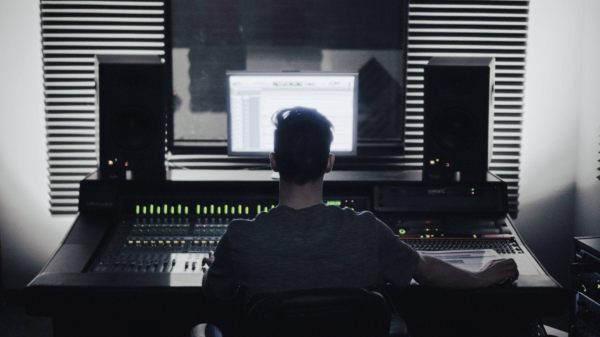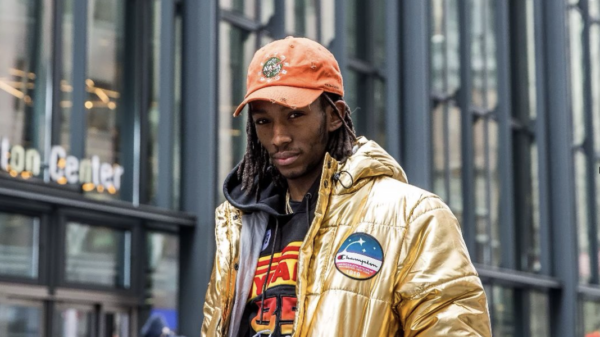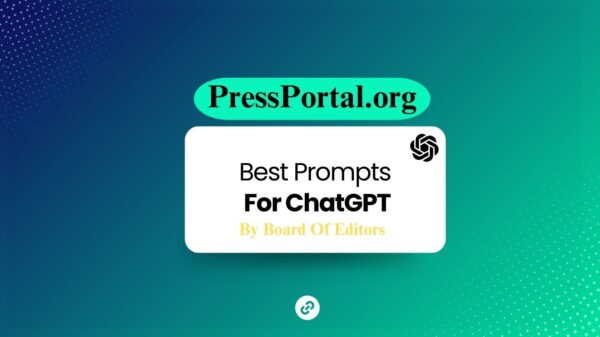Warm and sincere: that’s how saxophonist Boney James describes his music. “It’s so hard for me to be objective,” says the four-time Grammy nominee. “But those are two things that describe my music. I’m only trying to make records that I love, so I just call it ‘Boney James music.’”
Explore
See latest videos, charts and news
See latest videos, charts and news
Descriptions aside, James is still going strong after making his indie solo debut in 1992. Currently marking the 30thanniversary of his first major label signing in 1994, he just released his 19th album, Slow Burn, through Concord Records (Oct. 18). The follow-up to 2022’s Detour, Slow Burn features the sultry No. 12 Adult R&B hit/lead single “All I Want Is You” with newcomer October London. Additional guests include bassist Marcus Miller, pianist Cory Henry and trumpeter Rick Braun.
James also pays homage to two legends, reimagining Herbie Hancock’s “Butterfly” and Stanley Turrentine’s “Sugar.” And four of the album’s 10 selections, including its fittingly named title track, were co-written and co-produced by James and multi-instrumentalist Jairus Mozee (Anderson .Paak, Nicki Minaj).
Earlier this year, James became the first artist to score 20 No. 1 singles on Billboard’s Smooth Jazz Airplay chart. He achieved the feat as a guest on “Cigar Lounge” by chart first-timer Big Mike Hart. And James recently checked off another accolade: surpassing the 1 billion stream mark on Pandora.
Currently on the road with his Slow Burn tour, an exuberant James tells Billboard, “I just turned 63, but I honestly feel 20 and healthier than ever. My enthusiasm for doing this job hasn’t waned at all. I’m still like a kid in a candy store.”
What’s the secret behind your career longevity?
I hope the first thing is the music itself. I spend most of my waking hours trying to improve myself as a musician, songwriter and producer. I really pour my whole heart and soul into every project. And it seems there are some people out there that appreciate and still love the kind of records that I do. At least that’s how I take it, and that makes me feel very grateful. I don’t know that it’s jazz that I’m making; my music has a lot of facets to it. It’s got the R&B side, the Latin side and whatever I personally bring to it with my voice, which some people seem to recognize on the horn and enjoy. Maybe those are the reasons.
What sparks you creatively when choosing which songs to cover and which guests to work with on your albums?
With singers, it’s just trying to match the song with the voice. When I sit down to write a song, I’m always trying to write a song for me as the featured artist playing the saxophone. But every now and then, I come up with a piece of music that I feel, through intuition, needs to be a vocal. Then I think about the guy or woman who can bring the song to life vocally. I have sort of a running list of people that I keep. And I thought right away that “All I Want Is You” would be so right for October. I’d only heard of him last year when his debut album, The Rebirth of Marvin, came out. Instrumentally, I knew I wanted to work with Marcus on this album. He and I have been co-hosting our jazz cruises for the last 15 years but hadn’t done any recording in all that time — since he played on my Ride album in 2001. We were in the ship’s dressing room one day and Marcus was jamming with the acoustic bass. I didn’t even know he played acoustic bass. So I filed that away and then actually put his acoustic bass solo on [album opener] “Arcadia.”
In covering Herbie’s “Butterfly,” every now and then you get an earworm, and “Butterfly” had become my earworm. Every time I’d pick up my soprano sax at soundcheck on the road, I’d start playing the “Butterfly” intro. So that was the very first thing I worked on for this record — seeing if I could come up with a Boney-esque arrangement. It’s a similar story with Stanley Turrentine’s “Sugar.” It’s a song from my past that I’ve always loved. I just shook up the groove a bit for more of a contemporary vibe with Rick Braun.
Speaking of newcomer London, what was it like working with him?
I was so impressed with his voice. And I also felt like we shared a musical sensibility. He’s a young cat, but he’s got a retro sensibility. So I was glad to hear that he agreed [to work together], coming up with this incredible vocal. People are bringing back R&B, so I’m always glad when it [my music] connects with a wider audience. And it’s not something I’m conspiring to do. This is just a natural offshoot of one facet of the music that I make. I mean, I came up on the R&B side. That was my entry into the music business: playing as a sideman with R&B acts. R&B was the first music that I really loved. And it was only when I heard Grover Washington Jr. playing the saxophone over that sound that I became excited about the saxophone. And since I can’t sing, I’ve got to hook up with singers. I joke onstage that I’m an R&B singer trapped in a sax player’s body. [laughs]
Your first professional sideman stint was with The Time’s Morris Day. How did that come about?
I was delivering pizzas to pay my bills, trying to figure out how to make it as a musician. This was about 1985, right after Purple Rain. Morris had just broken up with The Time. He’d moved to L.A. and putting a whole new band together. He was looking for a keyboard player, not a sax player. I played a little keyboard and had learned to play “The Bird” and “Jungle Love.” So I went to the cattle call, tried out and he hired me. I was in Morris’ band for five years. Then I was a sideman for several more years – working with the Isley Brothers, Bobby Caldwell, Sheena Easton, Teena Marie … I can’t even remember all the gigs that I did — before I was able to make my first album.
What one lesson did you internalize while working with Day?
Every single one of those gigs taught me something. I was always studying, you know. But with Morris, it was about how to deliver a good show. It wasn’t just about getting up there, closing your eyes and playing your horn. You want to entertain people. And I learned that from him. There’s another memory that I also still hold dear. After they hired me to play keyboards, I said I was really a sax player. They didn’t believe me. So I brought my horn to rehearsal and Morris later put a sax feature in the show. During “Gigolos Get Lonely Too,” he’d bring a woman onstage and essentially play out a scene from Purple Rain. Then he’d go off to change his costume. And Morris gave me that time to lead the band and do an extended sax solo. That was really when I thought, “Man, I could get used to this.”



























